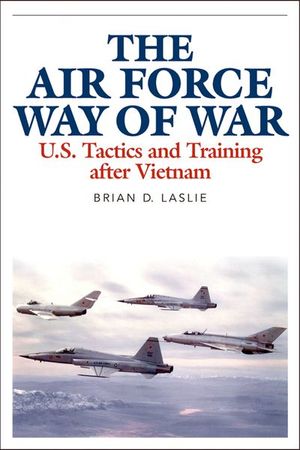The Air Force Way of War
Published by The University Press of Kentucky
“Laslie chronicles how the Air Force worked its way from the catastrophe of Vietnam through the triumph of the Gulf War, and beyond.” —Robert M. Farley, author of Grounded
The U.S. Air Force’s poor performance in Operation Linebacker II and other missions during Vietnam was partly due to the fact that they had trained their pilots according to methods devised during World War II and the Korean War, when strategic bombers attacking targets were expected to take heavy losses. Warfare had changed by the 1960s, but the USAF had not adapted. Between 1972 and 1991, however, the Air Force dramatically changed its doctrines and began to overhaul the way it trained pilots through the introduction of a groundbreaking new training program called “Red Flag.”
In The Air Force Way of War, Brian D. Laslie examines the revolution in pilot instruction that Red Flag brought about after Vietnam. The program’s new instruction methods were dubbed “realistic” because they prepared pilots for real-life situations better than the simple cockpit simulations of the past, and students gained proficiency on primary and secondary missions instead of superficially training for numerous possible scenarios. In addition to discussing the program’s methods, Laslie analyzes the way its graduates actually functioned in combat during the 1980s and ’90s in places such as Grenada, Panama, Libya, and Iraq. Military historians have traditionally emphasized the primacy of technological developments during this period and have overlooked the vital importance of advances in training, but Laslie’s unprecedented study of Red Flag addresses this oversight through its examination of the seminal program.
“A refreshing look at the people and operational practices whose import far exceeds technological advances.” —The Strategy Bridgei
BUY NOW FROM
COMMUNITY REVIEWS

